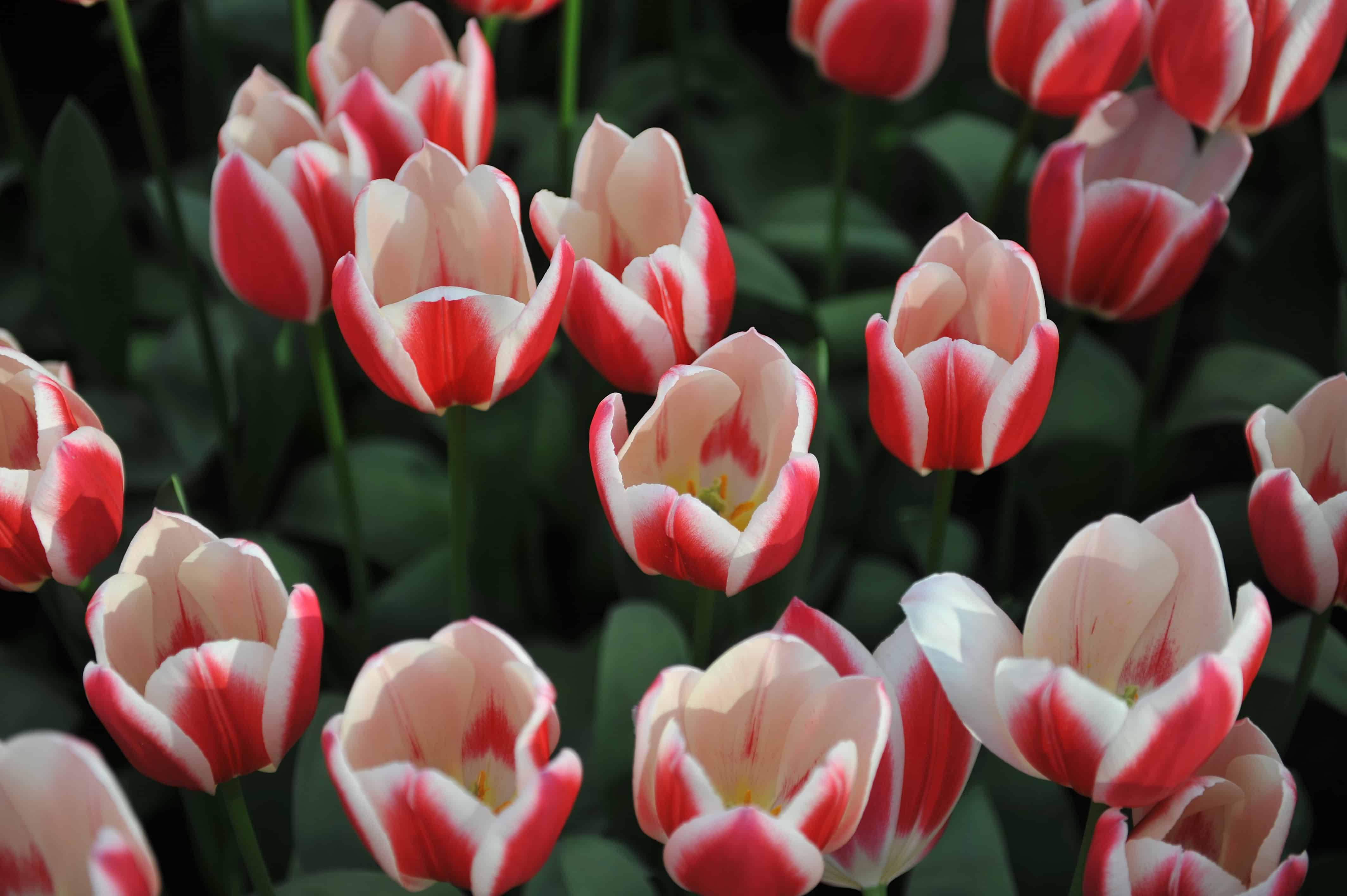Tulips are one of the most popular and recognizable flowers in the world. A symbol of spring, these cheerful blooms are a welcome sight after a long winter. In addition to an endless array of colors, there are many types of tulips to choose from with well over a hundred species and thousands of varieties and cultivars.
As you sort through the endless tulip options for your garden, you might notice recurring types listed in the name. In this article, we’ll dive into the different types of tulips and what each distinction means.
Single Early Tulip
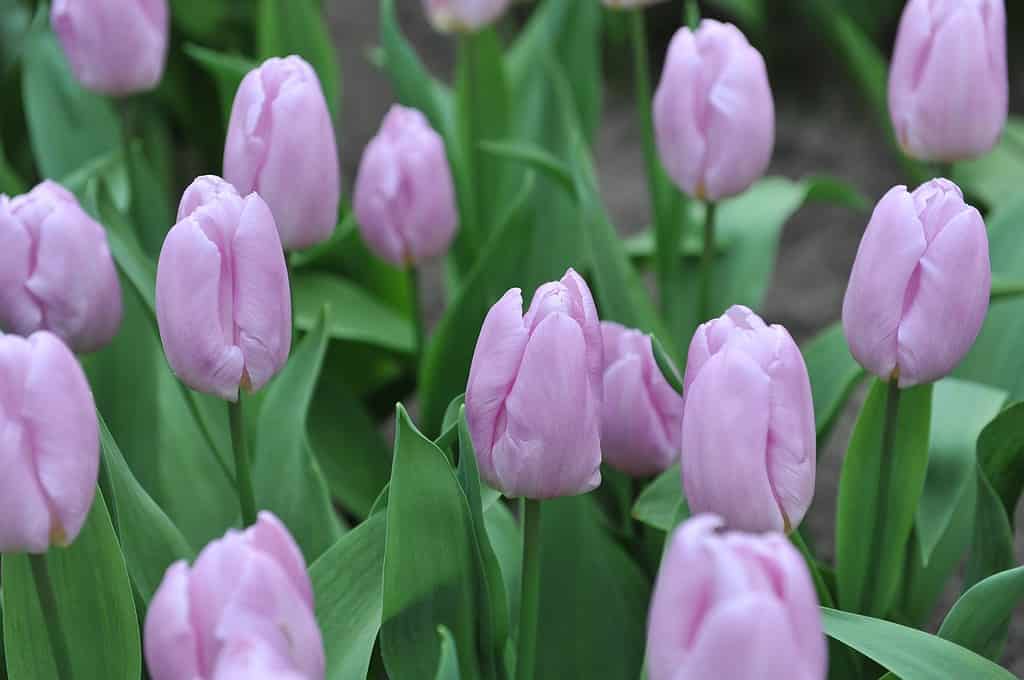
This single early tulip,
Tulipa‘Purple Prince’, is one of the first to bloom.
©Sergey V Kalyakin/Shutterstock.com
Single early tulips are what many people envision when they picture tulips. They have the iconic cup-shaped bloom and long, elegant stems and show up in the early days of spring.
Many gardeners consider the single early tulip the perfect companion for daffodils, as they bloom as soon as late March or early April, depending on the climate. Fortunately, tulips are resilient to late-season frosts and grow better in areas with cold winters. Cold winters help with the bulb vernalization process and result in bolder blooms during the spring.
Single early tulip hybrids tend to be moderate in height, ranging from 10-18 inches tall. Some popular single early tulip cultivars include Tulipa ‘Apricot Beauty’ and Tulipa ‘Purple Prince.’
Single Late Tulip
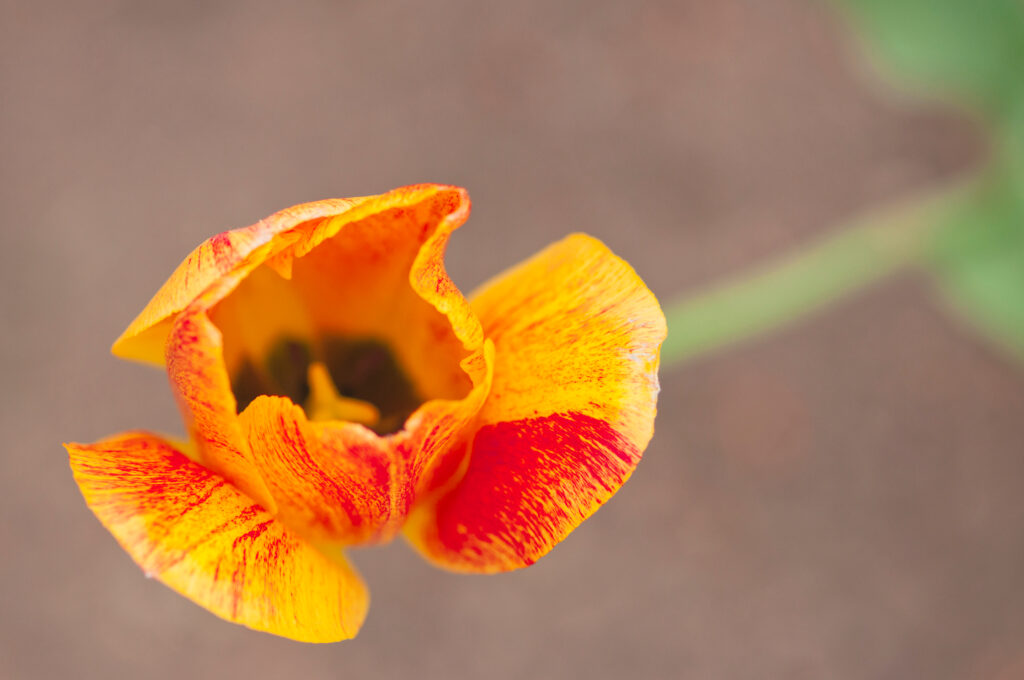
This single late tulip is a cheerful boost of color in May.
©Liviu Gherman/Shutterstock.com
Single late tulips have the same sizing and features as a single early tulip. However, these blooms grow later in the season—typically after single early tulips have already come and gone.
Single late tulips may also grow larger due to more seasonal weather and increased sun exposure. These tulips grow anywhere from 16-24 inches in height, with some species (such as Tulipa ‘Menton’) reaching as tall as 30 inches.
Some popular single late tulips include the mysterious black tulip, Tulipa ‘Queen of Night,’ and the stunning yellow and pink Tulipa ‘Blushing Beauty.’
Double Early Tulip

Garden filled with red Abba tulips— an early double tulip.
©Walter Erhardt/Shutterstock.com
Double tulips are recognizable by their lush, full blooms that resemble peonies. Like single early tulips, the double early tulip blooms earlier in the season, sometimes popping up in late March or early April in warmer climates.
Double early tulips are more susceptible to strong winds and rains than single tulips. This risk is due to their delicate petals and hefty blooms, which can increase stress on the stem in bad weather. Consider planting these in a wind-sheltered area if your climate has late winter storms or a rainy spring season. Like single early tulips, these early-season blooms are resilient to late-season frosts and thrive in regions with cold winters.
Some popular double early tulips include Tulipa ‘Monte Carlo,’ a cheerful, yellow bloom, and the pretty pink Tulipa ‘Peach Blossom.’ With proper care, these tulips reach 12-16 inches tall, with 8-10 inch wide blooms.
Double Late Tulip

‘Orange Princess’ is a double late tulip that adds a bold burst of color to a spring garden.
©Tatiana Alex/Shutterstock.com
Double late tulips also have lush, peony-like petals in thick double rows. Like late single tulips, these stunning flowers show up later in the season after the early blooms have come and gone.
Double late tulips are also sensitive to stormy weather, though they tend to fare better than double early tulips as the spring settles into summer. With proper care, these tulips will reach 16-20 inches tall with 8-10 inch wide blooms.
Some popular double late tulips include the lush, white tulip, ‘Mount Tacoma’ and the aptly-named purple tulip, ‘Purple Jacket.’
Fosteriana Tulips

Red Emperor Tulips blooming in a flowerbed
©pr2is/Shutterstock.com
Fosteriana tulips, also known as Emperor tulips, are early bloomers. This type of tulip tends to lead the charge when spring arrives, blooming around the same time as single and double early tulips.
Fosteriana tulips have larger goblet-shaped blooms than single tulips, their large flowers reaching up to six inches in diameter. With proper care, these tulips reach up to 20 inches tall.
Perhaps the most famous Fosteriana tulip is the ever-popular ‘Red Emperor.’ This red tulip is recognizable by its bold red petals and contrasting black center. There are also ‘Orange Emperor’ and ‘Yellow Emperor’ cultivars and several bicolored Fosteriana tulips.
Darwin Hybrid Tulips
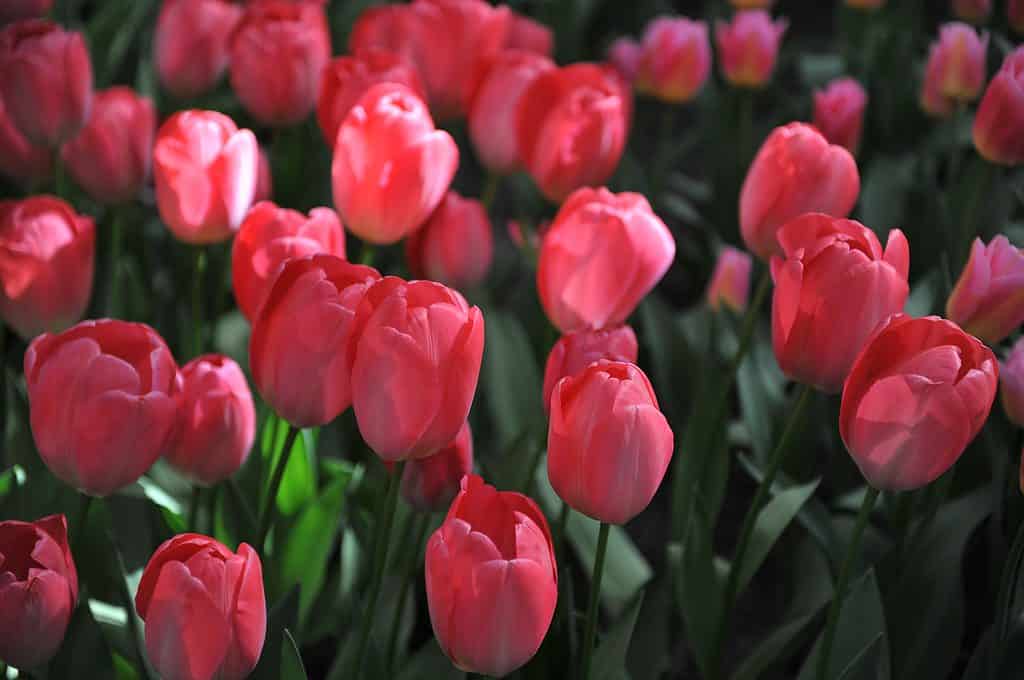
Darwin hybrid Pink Van Eijk Tulips with dark green foliage
©Sergey V Kalyakin/Shutterstock.com
Darwin hybrid tulips are another fan favorite for their height, mid-season blooming habits, and naturalization capabilities. Breeders created these tulips from the genes of single early tulips and Fosteriana tulips to produce the “perfect” tulip.
Darwin hybrids will grow 20-30 inches with proper care, with some cultivars growing taller than others. This type of tulip also boasts the classic cup-shaped bloom.
Some well-known breeds of Darwin hybrid tulips include Tulipa ‘Red Impression’ and Tulipa ‘Daydream.’
Lily-Flowered Tulip

Tulips are closely related to lilies and onions.
©Sergey V Kalyakin/Shutterstock.com
While double tulips are known for their resemblance to peonies, the lily-flowered tulip group is reminiscent of their namesake. Both tulips and lilies are a part of the Liliaceae family— along with onions!
Lily-flowered tulips are recognized by their petals’ curvature. In other words, the cup-shaped bloom curls outward at the top of the petals like a trumpet. These petals are often elongated with a fine, pointed tip.
These late-blooming tulips will grow anywhere from 16-24 inches with proper care. Their delicate stems are susceptible to wind and rain damage, so these tulips perform best in a sheltered area. Some popular varieties include the charming bicolored Tulipa ‘Ballade’ and the stunning white Tulipa ‘White Triumphator.’
Triumph Tulip
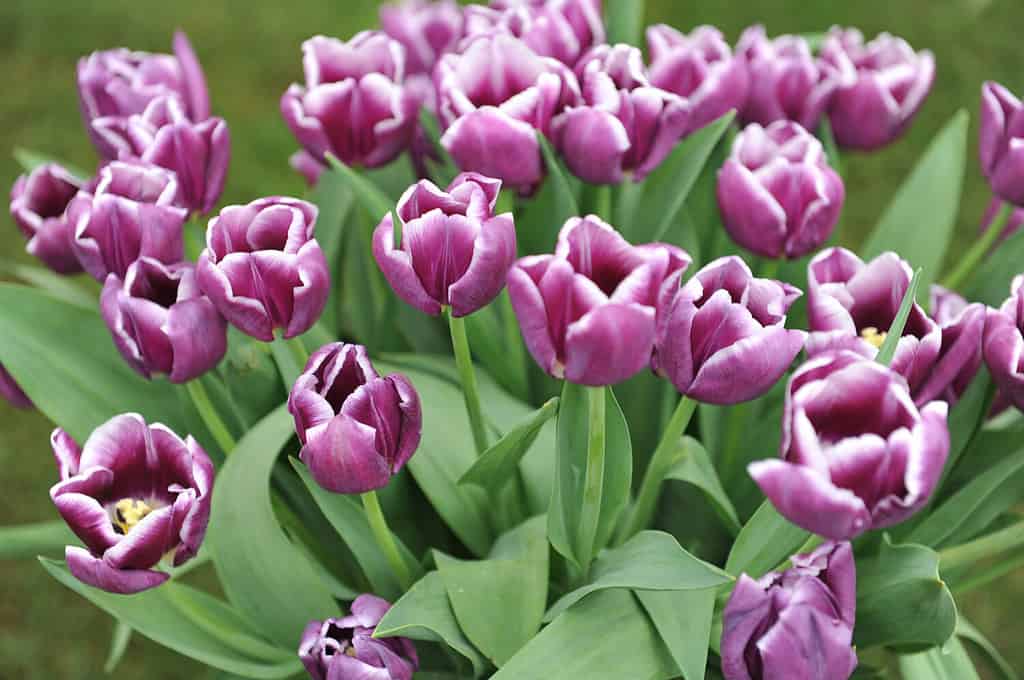
Triumph tulips are the largest tulip group.
©Sergey V Kalyakin/Shutterstock.com
When it comes to types of tulips, the Triumph tulip group is the most expansive, with an endless array of colors, patterns, and shapes to choose from. While most Triumph tulips have the traditional cup shape, petals range from delicate, pointed petals (like the Tulipa ‘Early Glory’) to notable curvatures (like the Tulipa ‘Barcelona’).
These tulips are mid to late-season bloomers and grow up to 18 inches tall with proper care—though some types are as short as 10 inches. These tulips are resistant to strong weather, making them perfect for open gardens without much shelter.
Tulipa ‘Princess Irene’ is one of the most famous Triumph tulips, recognizable by its bold orange petals and deep scarlet markings.
Kaufmanniana Tulip
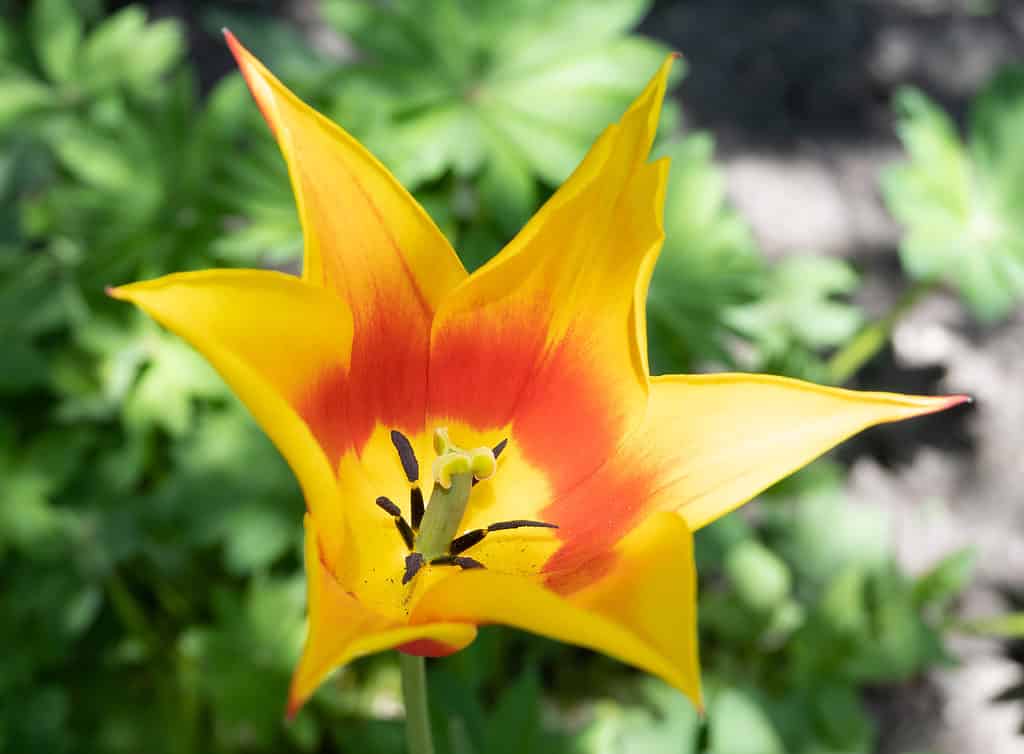
Close-up of a red and yellow Kaufmanniana Garden Tulip
©iStock.com/Lynne Nicholson
Also known as water-lily tulips, these flowers are known for their stellate petals and bold colors. This variety stems directly from the original, wild tulips of Central Asia. However, the modernized hybrids are larger and more showy.
Kaufmanniana tulips are early bloomers and typically have bright yellow centers— like a child’s drawing of a flower. These small tulips grow no more than 12 inches tall and are quite resilient, withstanding poor weather conditions and rocky terrain.
Some popular breeds of Kaufmanniana tulips include Tulipa ‘Giuseppe Verdi’ and Tulipa ‘Johann Strauss.’
Greigii Tulips

Pink and white Greigii tulips
©Sergey V Kalyakin/Shutterstock.com
Greigii tulips are often grouped with Kaufmanniana tulips due to their similarities in appearance, growing habits, and a few genetic overlaps. While Greigii tulips also have stellate petals and contrasting yellows and reds, these blooms tend toward a broader bowl shape rather than the traditional cup shape petals.
Greigii tulips also bloom later than Kaufmanniana tulips, showing in the mid-spring. These low-growers reach no more than 12 inches tall.
Tulipa ‘Red Riding Hood’ is one of the most famous Greigii tulips. Other known breeds include Tulipa ‘Toronto’ and Tulipa ‘Mary Ann.’
Parrot Tulip

Close-up of a tulip Black Parrot in a garden
©DeepGreen/Shutterstock.com
Parrot tulips are known and loved for their feathery petals and interesting color profiles. The petals are often serrated or wavy, sometimes with twists and curls adding to their visage.
These late bloomers come in a broad range of shapes, bloom sizes, and heights, with cultivars named for their distinct traits. Parrot tulips range from 14-26 inches tall. Unlike other tulips, which have uniform, symmetrical blooms, the parrot tulips are often random and unique from one flower to the next. Some petals curve inward while others fan out in a showy display.
Tulipa ‘Blue Parrot’ is one of the few tulips graced with a “blue” classification (although it’s actually a pale purple). Meanwhile, the Tulipa ‘Bright Parrot’ has bold red petals with yellow edges, giving the petals a flame-like appearance.
Fringed Tulip
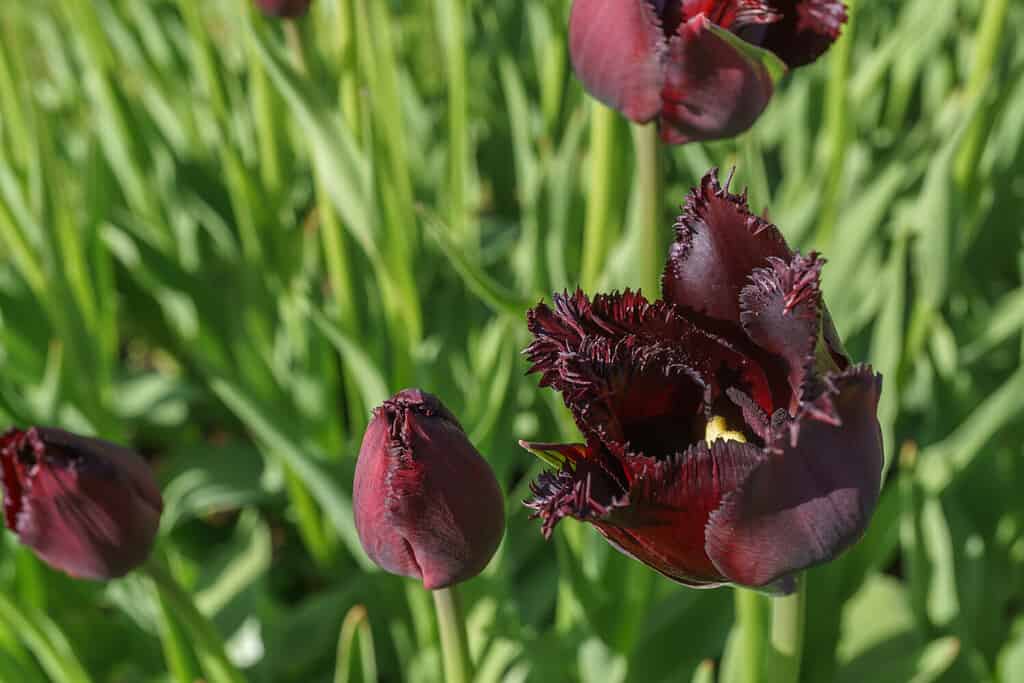
This dark red burgundy fringed tulip is named after Vincent van Gogh.
©vinbergv/Shutterstock.com
While similar to Parrot tulips, the Fringed tulip group has subtle differences. Fringed tulips have petals with delicate, finely fringed or serrated edges, giving the petals a lacy or feathery appearance. The fringes are typically evenly spaced along the edges of the petals rather than creating a feathered appearance across the entire bloom.
Fringed tulips also tend toward a more traditional tulip shape rather than the flamboyant and sometimes random parrot tulip shape. Fringed tulips also have a wide range of colors and sizes, reaching up to 24 inches tall.
Tulipa ‘Vincent Van Gogh’ is a stunning black fringed tulip, while Tulipa ‘Swan Wings’ offers a stunning contrast in white.
Viridiflora Tulip
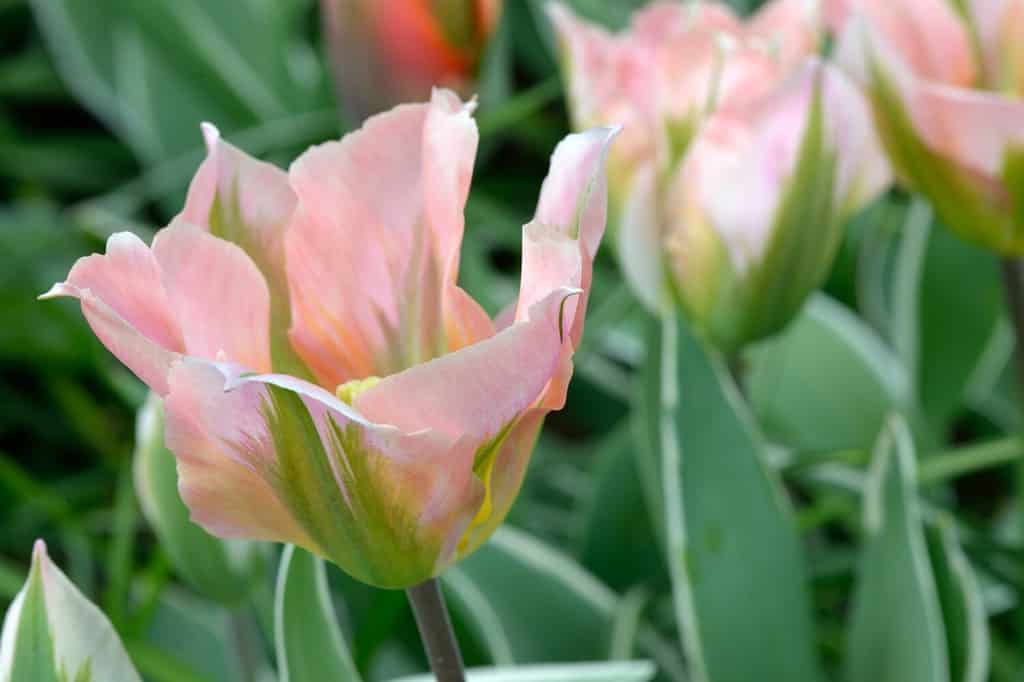
China Town tulips are pink and green
©Walter Erhardt/Shutterstock.com
While true green tulips don’t exist, there is a group called Viridiflora Tulips that are known for their green markings. These markings usually extend from the foliage and decorate the outer edges of the tulip petals. The contrasting colors come in a variety of shades.
These late-bloomers are long-lasting— perfect to cap off the growing season! Viridiflora tulips can reach up to 20 inches tall in ideal conditions.
One particularly well-liked “green” variety is Tulipa ‘Spring Green’. This white tulip creates a striking contrast with its green streaks on the exterior of the petals, which can resemble a mint-like hue under specific lighting conditions. Tulipa ‘China Town’ is another popular breed with soft pink petals against the green.
Botanical Tulips
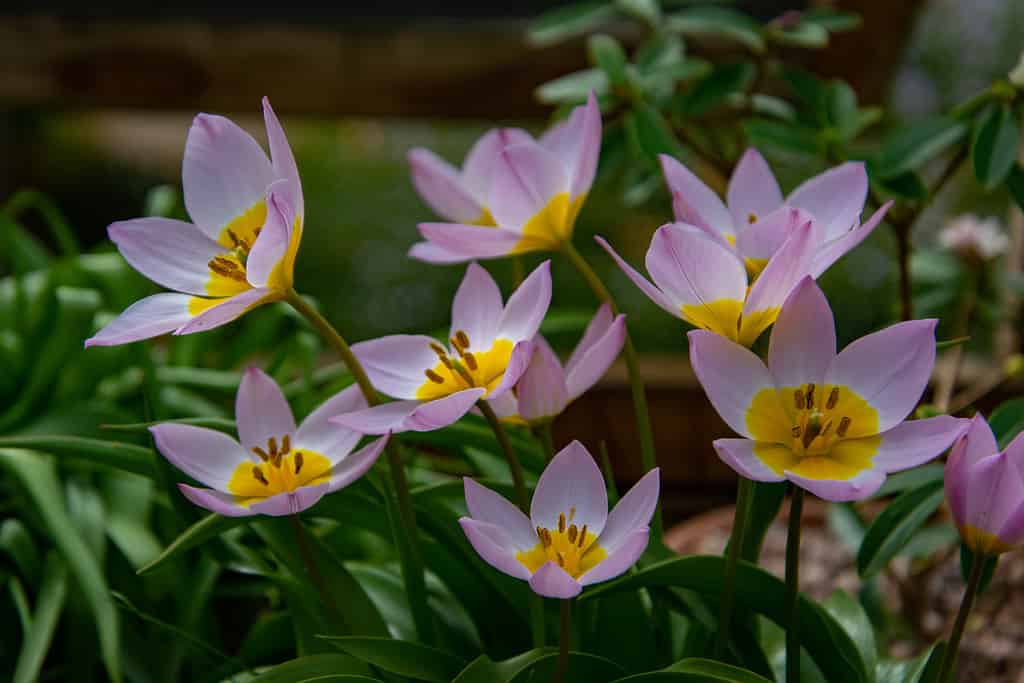
Close-up of
Tulipa saxatilis‘Lilac Wonder’ tulips
©NKHPhotography/Shutterstock.com
Botanical tulips are a group pertaining to cultivars that closely resemble the original wild tulips before horticulturists started hybridizing and cultivating. These unique blooms are small, easily naturalized, and only loosely resemble tulips as we think of them today. Botanical tulips are often similar to Greigii tulips and Kaufmanniana tulips.
These resilient blooms can withstand adverse weather conditions and surroundings. They typically grow no more than 12 inches tall and come in a variety of colors and shapes. Many botanical tulip petals have star-shaped blooms with bold, contrasting centers to attract pollinators.
Two fan-favorite botanical tulips include the blue-eyed tulip, Tulipa humilis ‘Alba Coreulea Oculata,’ and the eye-catching Tulipa saxatilis ‘Lilac Wonder.’
Thank you for reading! Have some feedback for us? Contact the AZ Animals editorial team.

